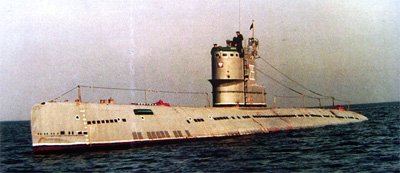Soviet SSN/SSK
With well over 200 attack submarines, both nuclear and conventionally powered Soviet Navy has more than twice as many as the US Navy and roughly the same number as all of NATO combined. The key difference however is that some of the submarines serving in the Soviet fleet are old, very old – and therefore quite obsolete. At the other end of the spectrum there are a few examples that are ultra-modern, capable of challenging the latest western technologies; these however are quite few in number.
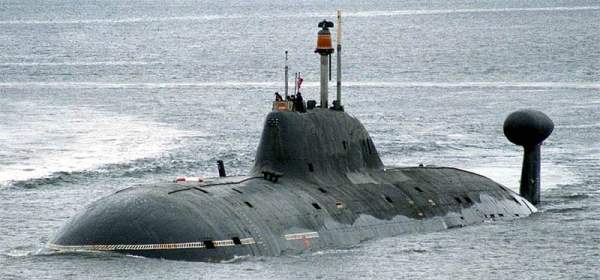
SSN
The 73 nuclear powered boats are classified by ‘generations’: All of 1st generation (late 1950’s, early 1960’s) boats are retired but most of the fleet, 48 boats are 2nd generation ‘Victor’ types with 11 ‘Sierra’ and ‘Alpha’ types making up the 3rd generation and 14 variations of the ‘Akula’ 4th generation in service. Additionally there are five ‘Yankee’ class SSNs converted from Ballistic Missile submarines (SSBN) remaining that are held in reserve and mothballed. The three main tasks of Soviet SSNs are to hunt NATO submarines, interdict NATO’s Strategic Lines of Communications (SLOC) and protect Soviet surface ships. The long endurance, relative stealth, lethal weapon load and independence make these boats very capable adversaries for these roles but also for information gathering, protecting Ballistic Missile submarines (SSBN) and harassing NATO task forces.
Victor ClassConsisting of three variations of the original design, the Project 671 Shchuka boats are capable but have aging technologies and some of the Victor I (15) hulls are approaching retirement age. All have the ability to launch Torpedoes and various forms of Anti-Submarine missiles as well as Surface to Air Missiles (SAM) to keep NATO patrol aircraft at bay. The Victor II (7) program was terminated early after it was discovered that they were easily trackable by US sonars. The Victor III (27) sub class has a retractable towed array passive sonar system. One variation from historical deployments has three additional Victor IIIs in the Northern Fleet, re-deployed from the Pacific in the months preceding hostilities.
| Class | Pennant | Name | Fleet | Remarks |
|---|---|---|---|---|
| Victor I | K-38 | K-38 | Pacific | Project 671 |
| K-69 | K-69 | Northern | ||
| K-147 | K-147 | Northern | ||
| K-53 | K-53 | Pacific | ||
| K-306 | K-306 | Northern | ||
| K-323 | K-323 | Northern | ||
| K-370 | K-370 | Northern | ||
| K-438 | K-438 | Northern | ||
| K-367 | K-367 | Northern | ||
| K-314 | K-314 | Northern | Project 671V | |
| K-398 | K-398 | Northern | ||
| K-454 | K-454 | Pacific | Project 671V | |
| K-462 | K-462 | Northern | ||
| K-469 | K-469 | Northern | Project 671V | |
| K-481 | K-481 | Northern | ||
| Victor II | K-371 | K-371 | Northern | Project 671RT |
| K-387 | K-387 | Northern | Project 671RT | |
| K-467 | K-467 | Northern | Project 671RT | |
| K-488 | K-488 | Northern | Project 671RT | |
| K-495 | K-495 | Northern | Project 671RT | |
| K-513 | K-513 | Northern | Project 671RT | |
| K-517 | K-517 | Northern | Project 671RT | |
| Victor III | K-138 | K-138 | Northern | Project 671RTMK |
| K-218 | K-218 | Northern | Project 671RTM | |
| K-242 | Amur | Pacific | Project 671RTM | |
| K-244 | K-244 | Northern | Project 671RTM | |
| K-247 | K-247 | Pacific | Project 671RTM | |
| K-251 | K-251 | Pacific | Project 671RTM | |
| K-254 | K-254 | Northern | Project 671RTM | |
| K-255 | K-255 | Northern | Project 671RTM | |
| K-264 | K-264 | Pacific | Project 671RTM | |
| K-292 | K-292 | Northern | Project 671RTMK | |
| K-298 | K-298 | Northern | Project 671RTM | |
| K-299 | K-299 | Northern | Project 671RTM | |
| K-305 | K-305 | Northern | Project 671RTM | |
| K-324 | K-324 | Northern | Project 671RTM | |
| K-355 | K-355 | Pacific | Project 671RTM | |
| K-358 | Murmansky | Northern | Project 671RTM | |
| K-360 | K-360 | Northern | Project 671RTM | |
| K-388 | K-388 | Northern | Project 671RTMK | |
| K-412 | K-412 | Northern | Project 671RTM | |
| K-414 | K-414 | Northern | Project 671RTMK | |
| K-448 | K-448 | Northern | Project 671RTMK | |
| K-492 | K-492 | Pacific | Project 671RTM | |
| K-502 | K-502 | Northern | Project 671RTM | |
| K-507 | K-507 | Pacific | Project 671RTM | |
| K-524 | K-524 | Northern | Project 671RTM | |
| K-527 | K-527 | Northern | Project 671RTM |
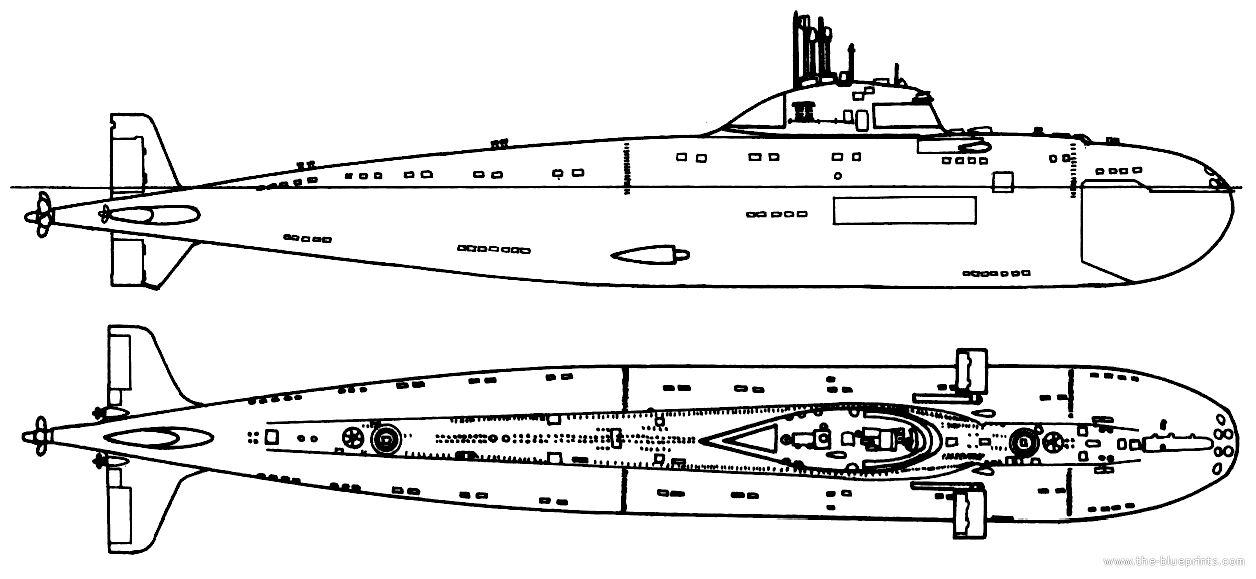
Victor I
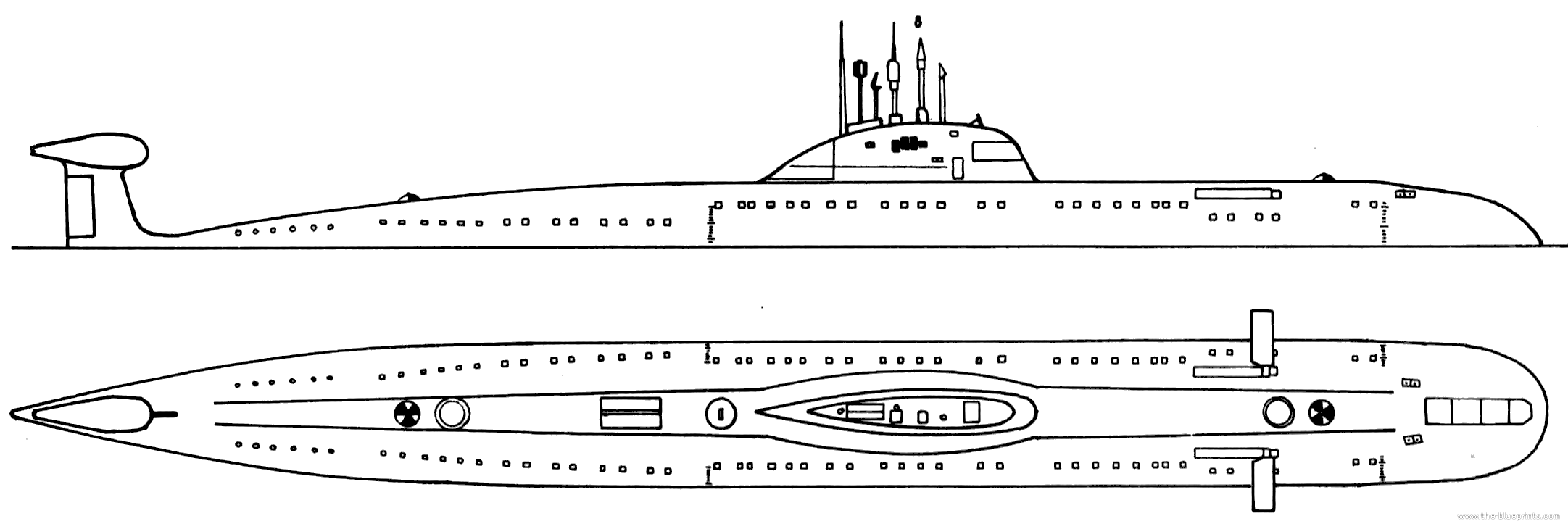
Victor III
Alpha ClassWith the exception of the single Papa Class prototype, the Project 705 ‘Lira’ class, known as Alpha Class in the west, were the fastest class of submarines built. The radical design incorporated several innovative technologies including a Titanium hull and liquid metal cooled reactor, allowing for a small hull size, high speeds and deep diving depths. With a crew of only 30-40, a speed of over 40 Knots and a diving depth exceeding 400 Meters, these submarines sent shudders through NATO and caused revolutionary re-designs of torpedoes, sonars and other systems in an effort to counter this threat. In reality these boats were difficult to maintain and operate but the technology developments were used as a basis for the follow on Akula design. The lead boat in this class, K-64, had a major coolant leak in 1972 resulting in superheated liquid metal contacting cold surfaces and instantly freezing, causing significant internal damage which was too expensive to repair, after being broken up it became a training platform. Only six other boats were built
| Class | Pennant | Name | Fleet | Remarks |
|---|---|---|---|---|
| Alpha | K-123 | K-123 | Northern | |
| K-316 | K-316 | Northern | ||
| K-432 | K-432 | Northern | ||
| K-373 | K-373 | Northern | ||
| K-493 | K-493 | Pacific | ||
| K-463 | K-463 | Pacific |
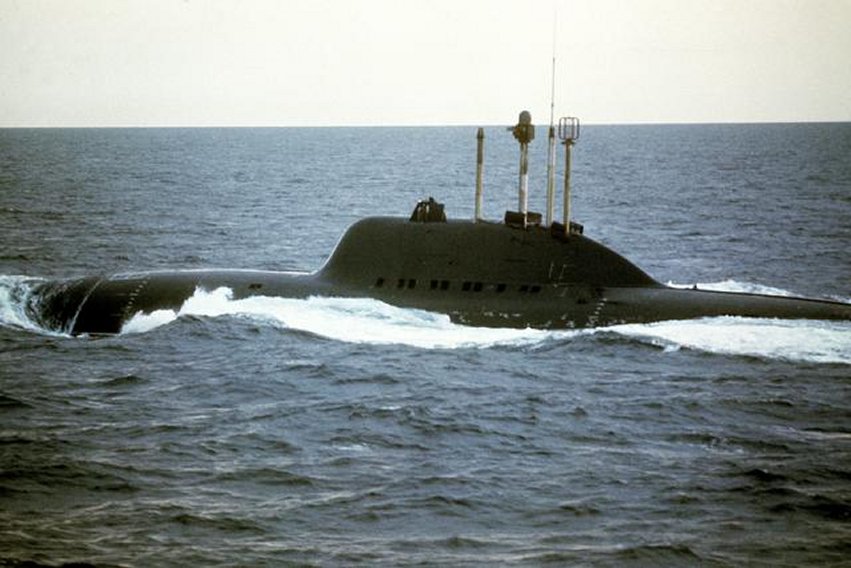
Sierra ClassThe Project 945 Barrakuda, or Sierra class in the west was an evolutionary design of the Victor III with technologies trialed in the Alpha. The titanium hull allows for a deep diving depth (450M) and relatively small crew (60-70) at speeds of 35 Knots. These are very potent adversaries but are limited in numbers in three sub classes; two Sierra I; two Sierra II with improved sonars and other improvements; and a single Sierra III which historically was scrapped before completion but is in service for Northern Fury.
| Class | Pennant | Name | Fleet | Remarks |
|---|---|---|---|---|
| Sierra I | K-276 | Kostroma | Northern | Project 945 |
| K-239 | Carp | Pacific | Project 945 | |
| Sierra II | K-336 | Pskov | Northern | Project 945A |
| K-534 | Nizhniy Novgorod | Northern | Project 945A | |
| Sierra III | K-536 | Mars | Northern | Project 945AB |
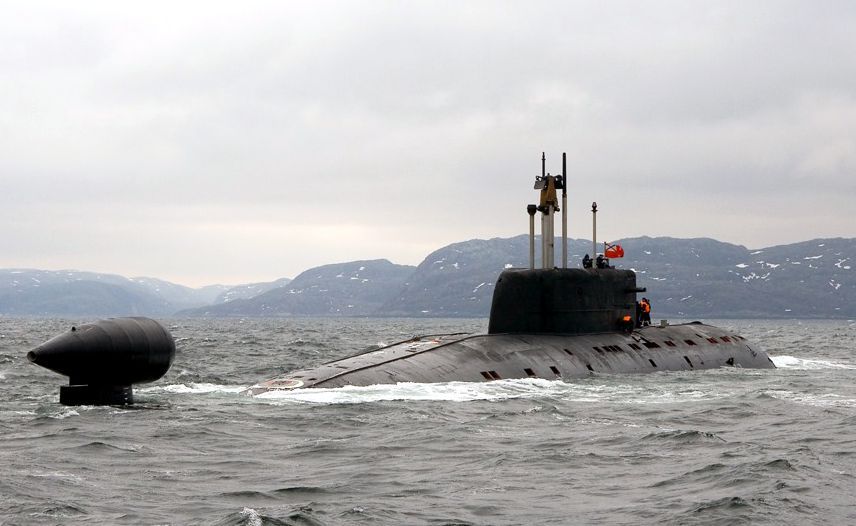
This is the most modern Soviet SSN, its production surprised the west and its capabilities caused some significant concern. Designated as the Project 971 Shchuka-B or Bars, they are collectively referred to as the Akula in NATO. Naming is further confused as the Typhoon SSBN is called the ‘Akula’ by the Soviets. Northern Fury accelerates production of a couple boats by several months and the final hull, K-157 ‘Vepr’ by about a year. The seven Akula I boats are sometimes compared to the US Los Angeles class SSNs, while the six ‘Improved’ Akula are quieter yet and have better sonars. The Final boat, the Akula II ‘Vepr’ has been compared to the Improved Los Angeles class.
| Class | Pennant | Name | Fleet | Remarks |
|---|---|---|---|---|
| Akula I | K-317 | Pantera | Northern | Project 971 |
| K-480 | Ak Bars | Northern | Project 971 | |
| K-331 | Magadan | Pacific | Project 971 | |
| K-391 | Bratsk | Pacific | Project 971 | |
| K-322 | Kashalot | Pacific | Project 971 | |
| K-263 | Delfin | Pacific | Project 971 | |
| K-284 | Akula | Pacific | Project 971 | |
| Akula Impr | K-154 | Tigr | Northern | Project 971-I |
| K-328 | Leopard | Northern | Project 971-I | |
| K-461 | Volk | Northern | Project 971-I | |
| K-295 | Samara | Pacific | Project 971-I | |
| K-419 | Kuzbass | Pacific | Project 971-I | |
| K-152 | Nerpa | Pacific | Project 971-I | |
| Akula II | K-157 | Vepr | Northern | Project 971U |
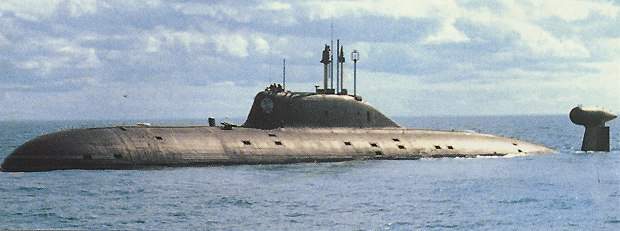
SSK
With 141 active and 54 in reserve, the Soviet Navy maintains – by far – the largest fleet of Diesel/Electric boats in the world. Following the Soviet penchant for keeping things beyond their time however, over half of the active boats should be retired, and those in reserve should probably be scrapped. Still, the 56 Kilo and Tango boats are very modern and capable, they alone represent a significant threat the NATO both on and under the waves.
The Soviet Fleet operates a total of 38 of these very capable (Project 877) subs, a significant increase of the 24 they obtained historically. Most of the increase was achieved through curtailing foreign sales but also through slightly accelerating construction. The only exports authorized were to Algeria (2), Iran (2), Poland (1), Romania (1) and Syria (2 not historic), although many of these retained Soviet advisors. The boats destined for India (8 by 1994), and China (2) were not delivered or the transactions terminated in various ways. The net difference in exports by 1994 was 8. There were also four boats historically scrapped or not completed in 1994, and two with very slow construction, but in Northern Fury these were completed in time for the campaign. These are quiet, efficient boats able to use a variety of weapons and present a significant challenge to NATO forces who often call them the ‘Black Hole’ because they are so difficult to find.
| Class | Pennant | Name | Fleet | Remarks |
|---|---|---|---|---|
| Kilo | B-248 | Northern | ||
| B-177 | Black Sea | |||
| B-187 | Pacific | |||
| B-190 | Pacific | |||
| B-220 | Baltic | |||
| B-224 | Baltic | |||
| B-227 | Vyborg | Northern | ||
| B-229 | Northern | |||
| B-260 | Chita | Pacific | ||
| B-345 | Mogocha | Pacific | ||
| B-354 | Black Sea | Divert from India | ||
| Imp Kilo | B-394 | Tadjkistana | Baltic | Divert from India |
| B-401 | Novosibirsk | Northern | ||
| B-402 | Vologda | Pacific | ||
| B-404 | Pacific | |||
| B-405 | Tyumensky | Northern | ||
| B-425 | Northern | Divert from India | ||
| B-437 | Yaroslavl` | Pacific | Divert from India | |
| B-439 | Northern | |||
| B-445 | Svyatitel | Pacific | ||
| B-459 | Vladikavkaz | Pacific | ||
| B-464 | Ust`-Kamchatsk | Northern | ||
| B-468 | Northern | |||
| B-470 | Northern | Completed | ||
| B-471 | Magnitogorsky | Northern | ||
| B-494 | Ust`-Bol`sheretck | Northern | ||
| B-800 | Vologodsky | Northern | ||
| B-806 | Dmitrov | Northern | ||
| B-871 | Alrosa | Northern | Pump Jet | |
| B-880 | Del'fin | Northern | Divert from India | |
| B-903 | Black Sea | Divert from India | ||
| B-917 | Pacific | Divert from China | ||
| B-922 | Pacific | Divert from China | ||
| B-351 | Northern | Divert from India | ||
| B-944 | Northern | Divert from India | ||
| B-947 | Northern | Completed | ||
| B-955 | Pacific | Not Scrapped | ||
| B-960 | Northern | Not Scrapped |
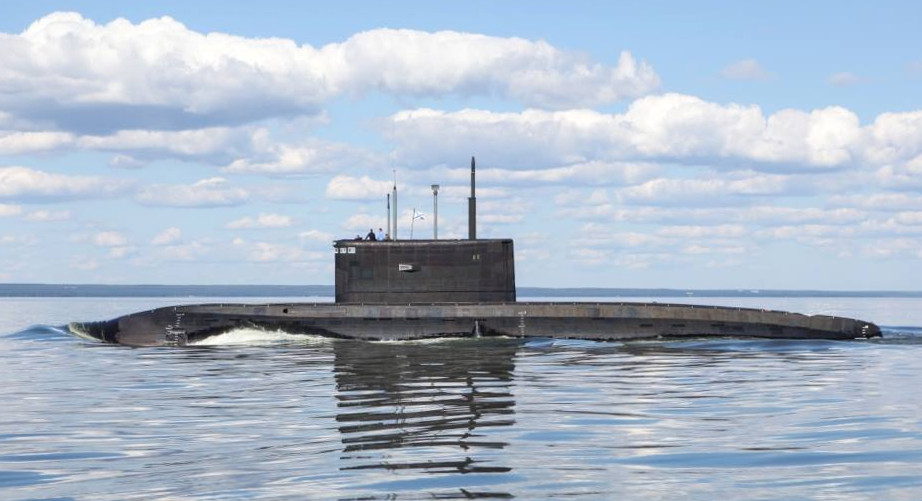
The 18 boats of the Project 641B (Tango) class were meant as an improvement on the previous Foxtrot class and indeed proved to be a significantly more capable submarine. Very quiet, able to remain submerged for more than a week before snorkeling to recharge its batteries and with a rubber sound absorbing coating these boats were hard to find. Coupled with improved armament, sonars, targeting systems and communications systems, the Tango class was very capable and caused NATO ASW forces great concern.
| Class | Pennant | Name | Fleet | Remarks |
|---|---|---|---|---|
| Tango | B-380 | Gorkovsky | Northern | |
| B-30 | Northern | |||
| B-97 | Pacific | |||
| B-146 | Kazakhstana | Northern | ||
| B-215 | Northern | |||
| B-225 | Med | |||
| B-290 | Northern | |||
| B-303 | Black Sea | |||
| B-307 | Northern | |||
| B-312 | Med | |||
| B-319 | Chuvashii | Northern | ||
| B-443 | Magnitogorsky | Baltic | ||
| B-474 | Northern | |||
| B-498 | Northern | |||
| B-504 | Novosibirsky | Pacific | ||
| B-519 | Northern | |||
| B-546 | Northern | |||
| B-597 | Northern |
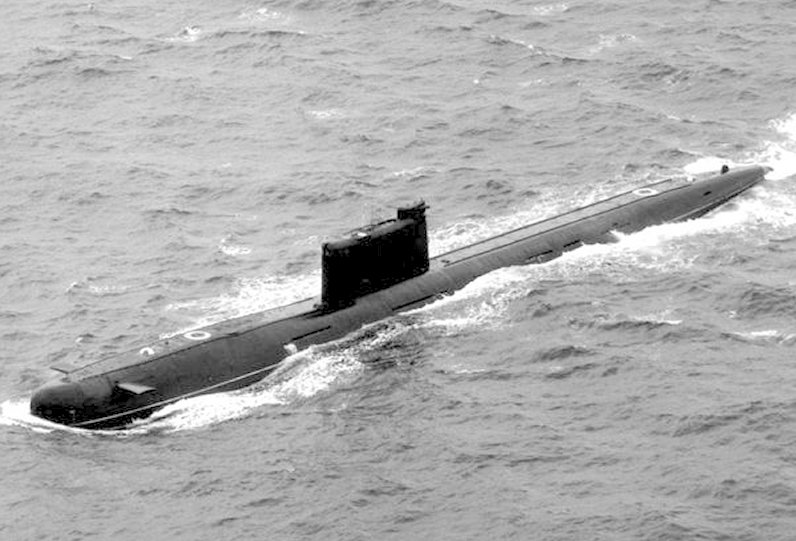
Built from 1957 until 1983 the original 58 Project 641 boats were noisier than most contemporary submarines but capable of long distance sustained operations. They were also slow, averaging just 2-3 knots submerged, but could remain below the surface for almost 10 days, impressive for the era. Four have been scrapped or sunk and the 54 remaining submarines were obsolete by the late 1970’s, even though they were still building into 1983 and used to the year 2000.
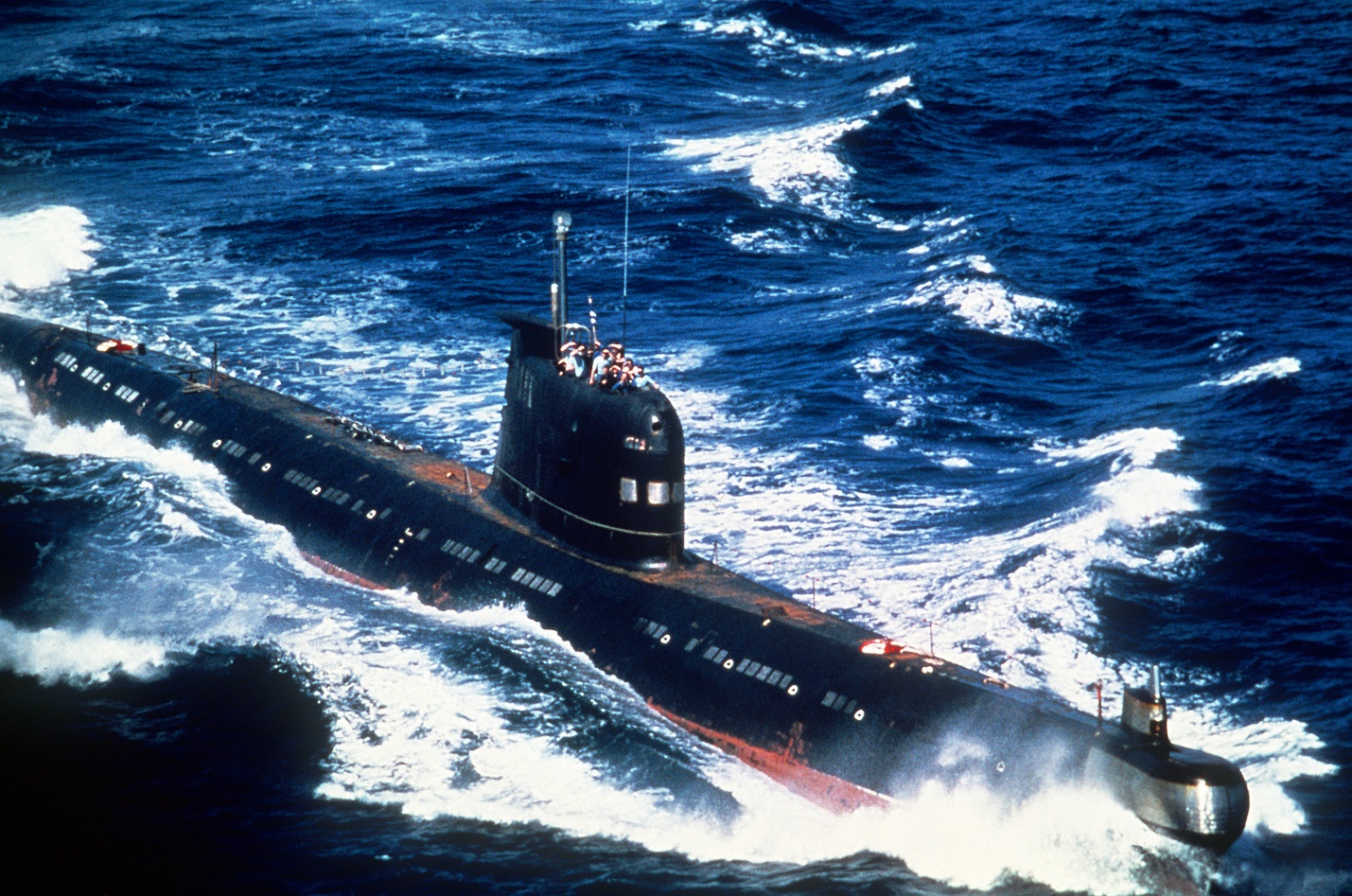
The Soviet Navy only operated 20 of the 133 boats of this class that were built. Originaly planning to deploy more than 50, they were canceled with advent of nuclear powered SSNs, but were still very useful in the export market. Representing the ultimate evolution of the Whiskey Class these were even more obsolete than the Foxtrot class by 1994.
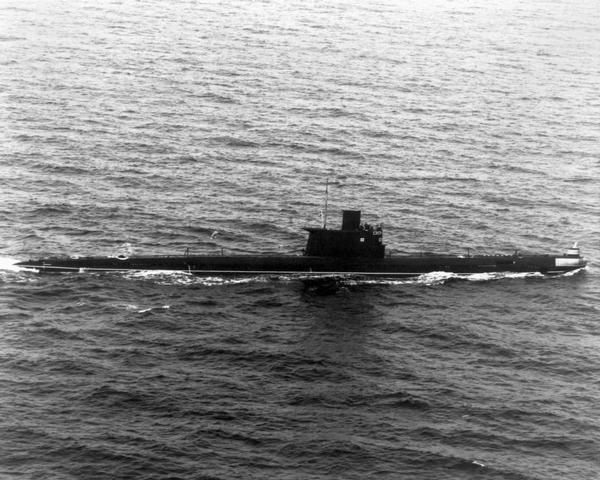
Whiskey ClassDesigned in World War II and then influenced by captured German Type XXI U-Boats. Called Project 613, there were five major variants and an astounding 215 built in the Soviet Union by 1958. In addition to 21 built in China and 41 exported to various countries, the Soviets were still operating 45 in the 80s with 15 in reserve. Most were retired in 1990 but six were still active in 1994 as well as 54 in reserve. Many boats were converted over time to test various systems and some were converted into Guided Missile Submarines (SSG) but the six Whiskey Long Bin and seven Whiskey Twin Cylinder, as well as the four radar picket Whiskey Canvas Bag variants were all retired. All remaining boats were a relatively universal design with six torpedo tubes and although unlikely, some may have had one, two or 25mm anti-aircraft guns.
| Northern | Pacific | Black | Baltic | Total | |
|---|---|---|---|---|---|
| Foxtrot | 22 | 18 | 6 | 8 | 54 |
| Romeo | 9 | 8 | 2 | 2 | 21 |
| Whiskey | 3 | 1 | 2 | 6 | |
| Whiskey | 24 (Reserve) | 16 (Reserve) | 8 (Reserve) | 6 (Reserve) | 54 (Reserve) |
